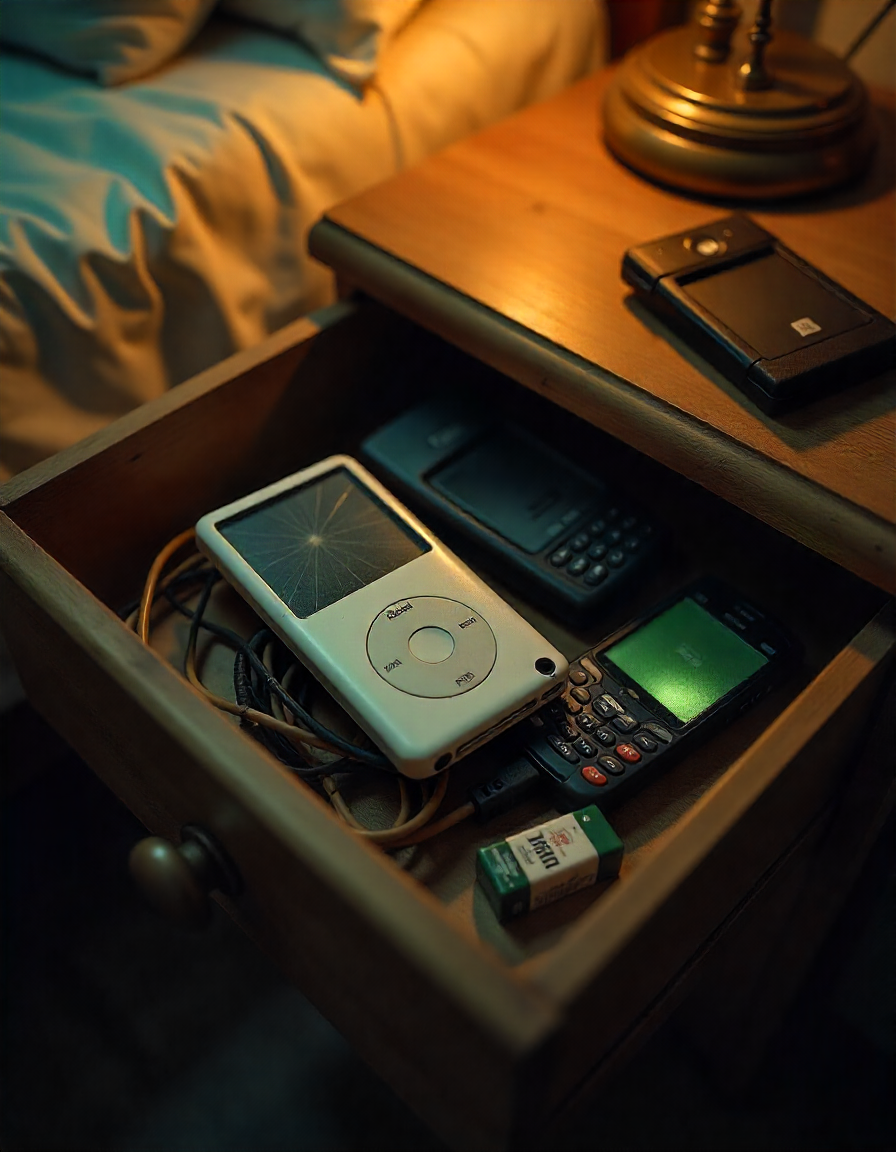The drawer in my nightstand contains more than just old receipts and spare batteries. Buried beneath a tangle of chargers lies a graveyard of digital ghosts: a first-generation iPod with a cracked screen, a PalmPilot that still faintly glows when powered on, and a Nokia 3310—its battery swollen like a forgotten artifact. These devices, once revolutionary, now serve as silent witnesses to technological obsolescence. Each year, millions of us participate in this quiet ritual of abandonment, discarding gadgets that still function but no longer fit our lives. What we rarely consider is that these devices never truly die. They linger in landfills, storage units, and secondhand markets, carrying fragments of our data, memories, and environmental consequences.
The lifecycle of modern gadgets has shrunk dramatically. In the early 2000s, the average smartphone lasted nearly three years before replacement. Today, that figure has plummeted to under 24 months. This acceleration stems from deliberate design strategies, software limitations, and cultural pressures. Manufacturers employ “planned obsolescence” through non-replaceable batteries, software updates that slow older devices, and design changes that make repairs impractical. When Apple introduced the iPhone 7 without a headphone jack, it effectively rendered millions of accessories obsolete overnight. Similarly, when Microsoft ended support for Windows 7, countless perfectly functional computers became security risks overnight.
The environmental toll of this cycle is staggering. The United Nations estimates 50 million tons of e-waste are generated annually, with only 20% formally recycled. The rest ends up in landfills where toxic materials like lead, mercury, and cadmium leach into soil and groundwater. In Agbogbloshie, Ghana, mountains of discarded electronics smolder as workers extract valuable metals using open fires, releasing carcinogenic fumes. Meanwhile, valuable resources like gold, silver, and rare earth elements—worth over $60 billion annually—are lost when devices aren’t properly recycled. A single smartphone contains approximately 60 different elements, many of which require environmentally destructive mining practices.
Beyond environmental impact lies the question of data persistence. Our abandoned gadgets are digital time capsules containing intimate details of our lives. The old laptop in your closet likely holds browser history, cached documents, and perhaps even forgotten photos. Security researchers have purchased secondhand devices and recovered everything from banking credentials to explicit messages. One study found that 10% of refurbished hard drives sold online contained personally identifiable information. This digital residue creates a privacy minefield, as most consumers fail to properly wipe devices before disposal.
The secondhand market offers a complex ecosystem for these digital ghosts. In Nairobi’s informal repair markets, technicians breathe new life into discarded Western smartphones, replacing screens and batteries with remarkable skill. These devices find second lives in regions where new technology remains financially inaccessible. Similarly, refurbished programs by companies like Apple and Best Buy extend gadget lifespans, though they represent a fraction of the market. Yet this reuse comes with complications—outdated software security, incompatible accessories, and the inevitable march toward complete obsolescence.
Some gadgets achieve cult status long after their commercial death. The Nokia 3310, discontinued in 2005, experienced a resurgence in 2017 when a modernized version was released. Original models now sell for hundreds of dollars on eBay, prized for their durability and nostalgic value. Similarly, film cameras have seen renewed interest among photographers seeking analog authenticity. These revivals suggest a growing pushback against disposable technology, though they remain niche movements rather than systemic change.
The emotional attachment we form with gadgets complicates their disposal. A survey by the Royal Society of Chemistry found that 45% of British households keep old phones “just in case.” This hoarding stems from practical concerns (data recovery, potential reuse) and emotional connections. Our devices witness intimate moments—they’re present during breakups, births, and travels. They hold photos of deceased loved ones and messages from lost friends. Parting with them can feel like discarding memories. When my grandfather died, we discovered his old flip phone still contained voicemails from my grandmother, who had passed away years earlier. Those brief recordings became priceless family artifacts.
Manufacturers are slowly acknowledging these issues. The “Right to Repair” movement has gained legislative traction in Europe and parts of the United States, forcing companies to make repair information and parts available. Framework laptops offer modular designs allowing users to replace individual components rather than entire devices. Fairphone produces smartphones with ethically sourced materials and user-replaceable batteries. These initiatives remain exceptions in an industry built on replacement cycles.
Cultural attitudes toward technology consumption are beginning to shift. Younger generations increasingly value sustainability and longevity in products. The rise of “tech minimalism” encourages owning fewer, more durable devices rather than chasing every new release. Repair cafés and community workshops teach basic electronics maintenance skills. These changes represent a growing awareness that our digital convenience comes at significant environmental and social cost.
The future may hold more radical approaches to gadget longevity. Researchers are developing biodegradable electronics using materials like cellulose and silk. Modular design concepts could allow users to upgrade specific components rather than replacing entire devices. Subscription models for hardware might incentivize manufacturers to create more durable products since they retain ownership. Blockchain technology could create transparent supply chains, ensuring ethical sourcing and responsible end-of-life processing.
As I clear out my nightstand drawer, I pause at the Nokia 3310. Its monochrome screen and physical buttons seem primitive compared to my current smartphone, yet it functioned flawlessly for years. The battery, though swollen, held a charge for days rather than hours. This device represents a different philosophy—one of durability and repairability that feels almost revolutionary today. When I finally recycle it through a certified e-waste program, I wonder what digital fragments it might still hold. Perhaps a forgotten text message or grainy photo survives in its memory, a digital ghost waiting to be erased.
Our relationship with technology has become disposable by design, but the consequences linger long after devices disappear from our pockets and drawers. The environmental damage, data vulnerabilities, and resource depletion create a legacy that extends far beyond individual ownership. As we marvel at each new technological breakthrough, we must also consider the ghosts we’re creating—devices that outlive their usefulness but never truly disappear. The challenge lies in building a future where our gadgets don’t become digital tombstones, but rather tools that serve us sustainably and respectfully throughout their entire lifecycle.

